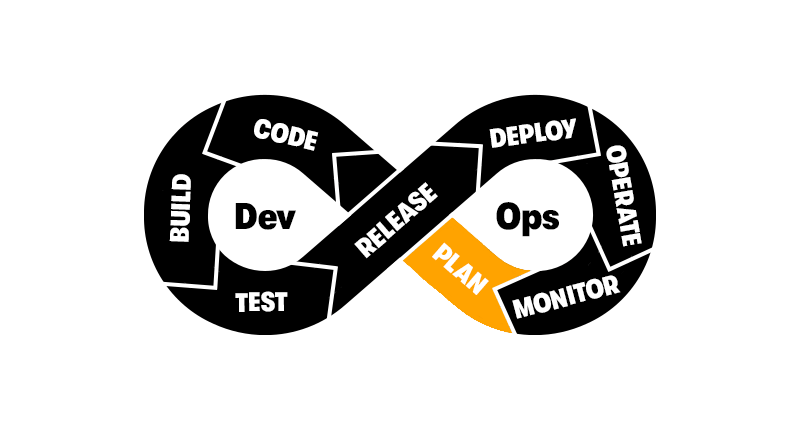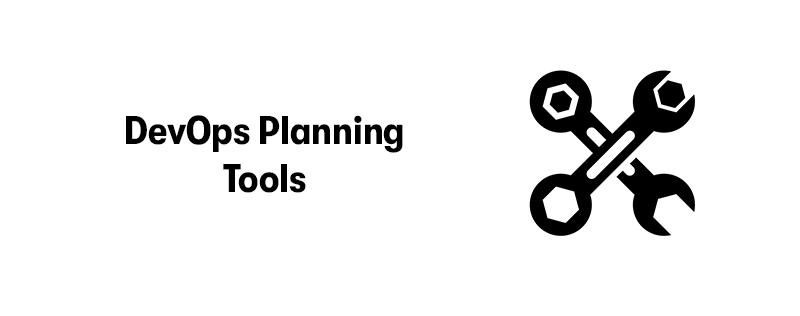DevOps Planning
DevOps didn’t just pop up overnight. It grew out of a growing frustration—developers were building stuff fast, but ops teams were stuck managing the fallout. In the early 2000s, folks started asking: why are these two teams working in silos when they’ve got the same end goal? Fast forward a bit, and DevOps was born out of the need for faster delivery, fewer surprises, and better collaboration.
But here’s the thing—before you can speed things up, you’ve got to slow down. Planning is where it all kicks off. It’s the phase that shapes everything that comes next. Think of it as the meeting point where goals are defined, expectations are managed, and everyone figures out what they’re actually trying to build. Without proper planning, the whole DevOps pipeline is flying blind.
So, why is this stage so often rushed or overlooked? And what happens when you get it right? Let’s break it down.
What is DevOps Planning?
DevOps has changed the way software is developed and delivered, pushing teams to break down silos between development and operations. A major part of this shift is DevOps Planning. So, what does it actually involve? And why is it something teams can’t afford to overlook?
At its core, DevOps Planning is about setting the stage. It’s the bit where you get everyone on the same page. Teams work together to define the project’s goals, agree on a roadmap, and figure out how to meet user and business needs. It’s not about guessing—it’s about being specific. Without this clarity at the start, things tend to go sideways pretty quickly.
How Planning affects the DevOps Lifecycle

A well-structured plan not only streamlines workflows but also aligns the project with business objectives, ensuring that every subsequent phase—from development to deployment—operates efficiently.
Understanding the DevOps Lifecycle
The DevOps lifecycle is a continuous loop encompassing several phases:
- Planning: Defining objectives, gathering requirements, and outlining the development roadmap.
- Development: Writing and reviewing code based on the plan.
- Integration: Merging code changes into a shared repository, often facilitated by Continuous Integration (CI) tools.
- Testing: Automated and manual testing to ensure code quality.
- Release: Deploying the application to production environments.
- Deployment: Ensuring smooth rollouts with minimal downtime.
- Operations: Monitoring and maintaining the application in production.
- Feedback: Gathering insights to inform future planning.
Each phase is interconnected, and the effectiveness of the entire lifecycle hinges on the robustness of the planning stage.
Role of Planning
Effective planning in DevOps involves:
- Requirement Gathering: Engaging stakeholders to understand business needs and user expectations.
- Defining Objectives: Setting clear, measurable goals for the project.
- Roadmap Creation: Developing a timeline that outlines milestones, deliverables, and deadlines.
This foundational work ensures that all team members are aligned, resources are appropriately allocated, and potential risks are identified early. According to Microsoft, promoting cultural alignment and autonomy during planning fosters an environment where teams understand their responsibilities and have the freedom to make decisions, striking a balance between top-down alignment and bottom-up autonomy.
Impact on Subsequent Phases
A comprehensive plan directly influences the efficiency and success of the following stages:
- Development: Clear requirements and objectives guide developers, reducing ambiguity and rework.
- Integration: Well-planned timelines facilitate frequent code commits, enhancing the CI process.
- Testing: Anticipating potential issues during planning allows for the development of effective test cases.
- Release and Deployment: Coordinated planning ensures that releases are timely and deployments are smooth, minimizing downtime.
- Operations and Feedback: Establishing monitoring metrics and feedback loops during planning enables proactive issue resolution and continuous improvement.
Consequences of Inadequate Planning
Neglecting thorough planning can lead to:
- Misaligned Objectives: Teams may work towards differing goals, causing confusion and inefficiency.
- Resource Mismanagement: Without a clear plan, resources may be under or over-utilised, impacting budgets and timelines.
- Increased Errors: Lack of foresight can result in overlooked requirements, leading to defects and rework.
DevOps Planning Best Practices

Embarking on a DevOps journey? Planning is your compass, guiding you through the integration of development and operations for smoother, faster deliveries. Let's explore some best practices to set your DevOps initiatives on the right path.
Foster a Collaborative Culture
DevOps thrives on breaking down silos between development and operations teams. Encourage open communication and shared responsibilities. Regular meetings and collaborative tools can bridge gaps, ensuring everyone is aligned towards common goals. After all, isn't teamwork the foundation of success?
Implement Continuous Integration and Continuous Deployment (CI/CD)
By regularly merging code changes and automating deployments, CI/CD pipelines reduce integration issues and accelerate releases. This approach not only enhances product quality but also fosters a responsive development environment. According to Atlassian, CI/CD is a cornerstone of effective DevOps practices.
Embrace Agile Project Management
Agile methodologies, like Scrum or Kanban, promote adaptability and iterative progress. Utilising tools such as Azure Boards can help visualise workflows, manage backlogs, and track sprint progress effectively. Planning each sprint with your team ensures clarity on deliverables and responsibilities.
Automate Testing and Monitoring
Automation is a linchpin in DevOps. Implementing automated testing ensures that new code integrations don't introduce errors, maintaining system integrity. Continuous monitoring provides real-time insights into system performance, aiding in proactive issue resolution. As highlighted by Veeam, automated testing and monitoring are pivotal for optimising development processes.
Prioritise Security and Compliance
Integrating security measures from the outset, often termed DevSecOps, ensures that security isn't an afterthought. Automated compliance checks and regular audits can help maintain regulatory standards without hindering development speed. Balancing innovation with control is crucial, especially in sectors like finance, where governance is paramount.
Utilise the Right Tools
Selecting appropriate tools that integrate seamlessly with your existing systems can enhance efficiency. Tools like Docker for containerisation, Jenkins for automation, and Ansible for configuration management can streamline workflows. Remember, the goal is to complement your processes, not complicate them.
Measure and Iterate
Establish key performance indicators (KPIs) to assess the effectiveness of your DevOps initiatives. Metrics such as deployment frequency, change lead time, and mean time to recovery (MTTR) provide insights into performance. Regular retrospectives can help teams reflect on successes and areas for improvement, fostering a culture of continuous enhancement.
Plan for Disaster Recovery
Unexpected issues are inevitable. Having a robust disaster recovery plan ensures that you can respond swiftly to incidents, minimising downtime and data loss. Regularly test your recovery procedures to ensure readiness when it matters most.
Encourage Experimentation
Innovation stems from experimentation. Create an environment where teams feel safe to test new ideas and approaches. Not every experiment will succeed, but each provides valuable learning opportunities that can drive future success.
Maintain Documentation
While automation and agility are emphasised, maintaining comprehensive documentation is vital. Clear records of processes, configurations, and decisions aid in onboarding, troubleshooting, and knowledge sharing. It's the map that guides your team through the complexities of DevOps terrain.
Tools for DevOps Planning

Forecasting delivery involves estimating when features or releases will be completed. This helps stakeholders manage expectations, align with product roadmaps, and allocate resources more effectively.
Jira Advanced Roadmaps
Jira is a cornerstone of agile DevOps planning. With Advanced Roadmaps, teams can visualise multiple projects on a timeline, estimate sprint velocity, and model future scenarios. Key features include:
- Team capacity planning
- Dependencies and blockers tracking
- “What-if” analysis for forecast adjustments
It’s especially useful for enterprises managing multiple agile teams across large backlogs.
Azure DevOps Boards
Microsoft’s Azure DevOps offers Boards, a feature-rich planning tool that integrates seamlessly with development pipelines. Using built-in analytics and forecasting widgets, teams can:
- Predict sprint outcomes
- Track work item progress
- Analyse historical velocity for better future estimates
Azure DevOps is a good fit for teams already embedded in the Microsoft ecosystem.
Monday.com
While not DevOps-specific, Monday.com provides customisable workflows that help in visualising project timelines and estimating delivery dates. Teams can use Gantt views, dependencies, and time-tracking features to keep planning on track.
Forecast
As its name suggests, Forecast is designed to improve delivery estimations. It uses AI to estimate timelines and resource needs based on historical data. Its visual interface and integration with tools like GitHub and Jira make it suitable for DevOps teams managing complex pipelines.
Prioritisation Approaches in DevOps
Once planning is underway, teams need to prioritise tasks based on value, risk, effort, and urgency. Several frameworks and tools help with this process.
MoSCoW Prioritisation
The MoSCoW method categorises features into:
- Must have
- Should have
- Could have
- Won’t have (for now)
This technique is simple yet effective for stakeholder alignment and scope control during sprint planning or release planning.
WSJF (Weighted Shortest Job First)
Popularised by the Scaled Agile Framework (SAFe), WSJF helps DevOps teams decide which features deliver the most value quickly. It calculates a score based on:
- Cost of delay
- Job size or effort
- Business value
Higher WSJF scores get prioritised, enabling data-driven planning.
RICE Scoring Model
RICE stands for Reach, Impact, Confidence, and Effort. This approach is helpful in product development planning where DevOps teams need to focus on delivering the highest impact with the least effort. It’s particularly useful when working with cross-functional teams across marketing, UX, and engineering.
Trello + Butler Automation
For smaller teams, Trello paired with Butler Automation can streamline backlog grooming. Using labels, checklists, and automation rules, teams can ensure priority tasks are surfaced, dependencies are resolved, and workflows stay efficient.
Combining Forecasting & Prioritisation for Smarter DevOps
Effective DevOps planning is not just about choosing the right tool—it’s about using the right combination of techniques. For example:
- Start with Jira to map your roadmap and dependencies.
- Use WSJF within your backlog to prioritise high-impact work.
- Forecast using team velocity and adjust priorities dynamically.
- Review plans continuously with stakeholders using dashboards or sprint reviews.
Tip: Regular retrospectives are key to refining your forecasting accuracy and tuning your prioritisation methods over time.
Common Challenges

Let's explore some common challenges you might encounter during DevOps planning and how to navigate them effectively.
Selecting the Right Metrics
Ever felt overwhelmed by a sea of data, unsure which metrics truly reflect your DevOps progress? Identifying the most relevant metrics is crucial. While deployment frequency and lead time for changes are popular choices, not every metric suits every organisation. It's essential to adopt a data-driven approach, utilising analytics platforms to discern patterns and focus on areas ripe for improvement.
Bridging the Collaboration Gap
Does it sometimes feel like your development and operations teams are speaking different languages? A lack of collaboration can lead to misaligned priorities and friction. To foster unity, clearly define roles within the DevOps framework and establish regular touchpoints, such as daily stand-ups, to ensure everyone is aligned and informed.
Managing Expectations
Are you hoping DevOps will be the magic wand that fixes all your development woes? While DevOps offers numerous benefits, it's not a cure-all. Setting realistic objectives and key results (OKRs) helps in measuring success and ensures that expectations align with reality. For instance, aiming for zero rollbacks per lifecycle can be a tangible goal to strive towards.
Embracing Flexibility
Do you find yourself sticking rigidly to the same processes, even when they don't fit the current project? In DevOps, adaptability is key. Tailoring your approach based on customer value and specific project needs ensures that you're not just following a template but actively enhancing outcomes.
Integrating New Tools
Feeling inundated by the plethora of DevOps tools available? Selecting and integrating the right tools can be daunting. It's vital to choose tools that align with your organisation's needs and ensure seamless integration into your existing infrastructure. Providing adequate training on these tools ensures that your team can leverage them effectively.
Managing Multiple Environments
Struggling with inconsistencies between development, testing, and production environments? Discrepancies can lead to unexpected issues during deployments. Implementing infrastructure blueprints and continuous delivery practices ensures uniformity across all environments, reducing deployment headaches.
Addressing Security Concerns
Worried that rapid deployments might compromise security? Integrating security from the outset, a practice known as DevSecOps, ensures that security considerations are embedded throughout the development process, safeguarding against vulnerabilities without sacrificing speed.
Overcoming Cultural Resistance
Is there pushback within your organisation against adopting DevOps? Cultural shifts can be challenging. Promoting open communication, highlighting the benefits of DevOps, and involving all stakeholders in the transition can ease the shift and build collective buy-in.
Navigating Skill Gaps
Concerned that your team might lack the necessary skills for a successful DevOps implementation? Investing in training and upskilling ensures that your team is equipped to handle the nuances of DevOps, from automation to continuous integration and delivery.
Continuous Monitoring and Feedback
How do you ensure that your DevOps processes remain effective over time? Implementing continuous monitoring and establishing feedback loops allows for real-time insights into system performance, enabling prompt adjustments and fostering a culture of continuous improvement.
Conclusion
So, where does that leave you? Planning might not be the flashiest part of DevOps, but it’s the bit that can make or break everything that follows. If you skip it or rush through it, don’t be surprised when things start to unravel later.
Final couple of tips? Keep your planning sessions short and focused—no one needs another three-hour meeting that goes nowhere. And make sure you're looping feedback from previous projects into your new plans. You’ve already done the hard yards—why not use that experience to avoid the same mistakes?


